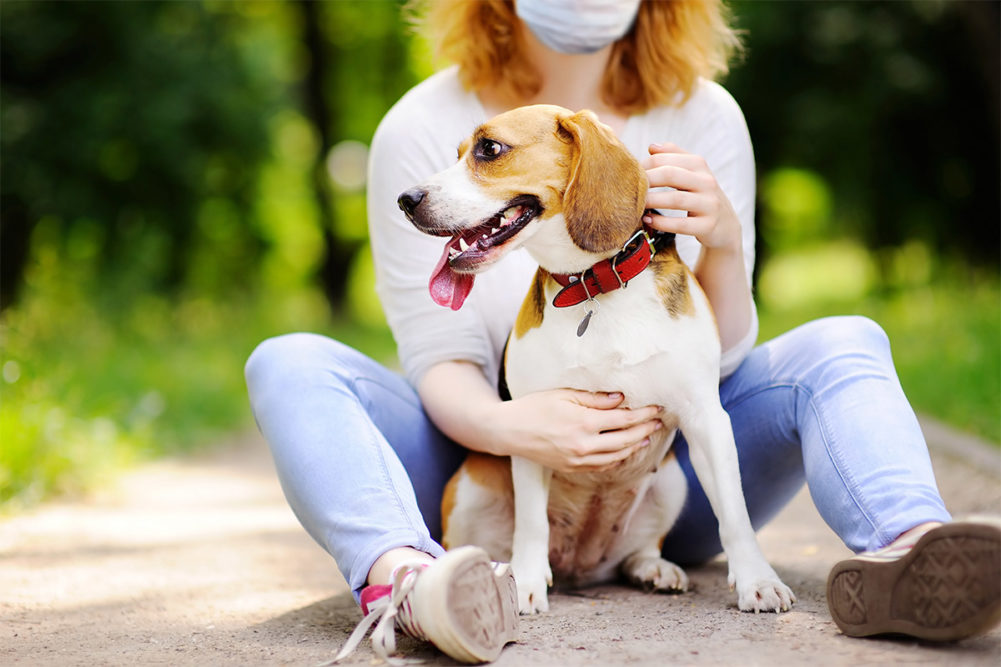STAMFORD, CONN. — An ongoing study by the American Pet Products Association (APPA) will track pet ownership and spending behaviors in the United States in the context of disruptions and economic hardship caused by the COVID-19 pandemic.
The study looks at current shopping behaviors, sales channels, purchases and pet owner sentiments toward the public health crisis. It also aims to gauge how pet owners’ financial stability has been personally impacted by the pandemic.
“It’s important that we navigate this pandemic with real-time information and our COVID-19 Pulse Study is a way for the pet care community to keep up-to-date on the effects it’s having on various aspects of pet ownership,” said Steve King, chief executive officer of APPA.
The initial report was published June 25.
Purchasing behavior
So far, pet ownership rates and purchasing behaviors have not been drastically altered by COVID-19 impacts, APPA reported. Nearly two-thirds (64%) of respondents reported their pet spending over the last month has not changed due to the pandemic.
Financial sentiments among pet owners in the wake of COVID-19 show some uncertainty for future pet spending. Half (50%) of all respondents said they are very concerned about their finances “over the next couple of months,” with Gen Z, Millennial and Gen X pet owners representing higher percentages of the pet-owning population who are concerned with their finances, according to APPA.
All generations, excluding Baby Boomers, as well as Hispanic pet owners, pet owners with young children and those living in more urban areas reported a significant financial impact from the pandemic. Nearly half (42%) reported seeing “a significant financial impact” from COVID-19 in their households, while just one-third of respondents said they believe the economy will “bounce back quickly.”
Some positive outcomes have resulted from shelter-in-place orders, social distancing and quarantining. According to APPA’s study, 70% reported they are spending more time with their pets as they practice social distancing, and 60% said they feel a stronger bond with their pet after spending more time with them. Another 72% of pet owners said their well-being and stress levels have improved due to spending increased time with their pets.
Pet food loyalty and stocking up
Additionally, 71% of pet owners surveyed said they do not plan to make changes to their pets’ diets, “regardless of the economy or their finances.” More than 50% of pet owners strongly agreed to that statement, especially older pet owners, APPA reported.
On the flip side, 16% of pet owners say they plan to spend less on pet food or switch to a less expensive brand.
Overall, 55% of respondents said they stocked up on pet food, while 44% purchased more treats than usual, during their most recent shopping trip. Among them, Gen Z, Millennials, pet owners in the northeastern United States, Black pet owners, Hispanic pet owners, those with young children and those living in urban areas represented a higher percentage of pet owners who purchased more than usual.
APPA reported 49% of pet owners have purchased pet food over the past week, 37% bought pet food sometime within the past month, 11% bought pet food more than one month ago, and 2% were unsure when they last purchased pet food.
Fewer pet owners (33%) said they purchased pet treats within the past week or month, 20% reported purchasing treats more than one month ago, and 14% were unsure when they last bought pet treats.
Retail channel trends
Twenty-seven percent of respondents said their most recent pet food or treat purchase was through a discount store or mass merchandise channel. Another 20% of respondents purchased pet food through a pet superstore, 15% bought pet food through an online-only outlet, and 13% purchased pet food from a supermarket.
For pet treat purchases, 19% of pet owners surveyed bought through a pet superstore, 13% purchased treats through an online-only outlet, and 14% bought them at a supermarket.
Of those pet owners, between 15% and 20% of pet owners said they bought products online and had them shipped directly to their house, and between 10% and 15% of pet owners utilized store pick-up or curbside pick-up services. Gen Z pet owners, Hispanic pet owners, those with young children and those living in more urban areas represented a higher percentage of online purchases with curbside pick-up.
More than half (57%) of pet owners who said they had used a curbside pick-up or online delivery service plan to continue using that service in the future, with 19% of respondents reporting they used one of those services for the first time during the COVID-19 pandemic.
APPA also noted 37% of pet owners had already been utilizing curbside and online delivery services before the pandemic, of which Millennials represented a higher percentage. Another 21% of pet owners said they will not utilize curbside pick-up or online delivery options again “because they prefer to go into the store.”
The supply chain for pet food and treat products appears to be strong, with 81% of pet owners reporting they found the specific brand of pet food they needed at the first retail location they went to. Two-thirds of pet owners said they same for pet treat products. Only 7% to 9% of pet owners reported needing to visit a second store to find the specific product they were looking for.
Follow our breaking news coverage of the coronavirus/COVID-19 situation.



